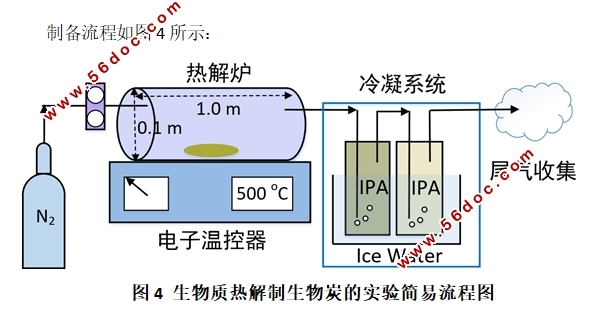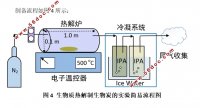农林剩余物生物炭的物化特性及其在农业应用的可行性分析(论文11000字)
摘要:农林剩余物是废弃物大家庭中的一个主要成员,是一种重要的生物质资源和重要的可再生资源,农林剩余物能源转化利用是可再生能源领域的研究热点之一。农林剩余物的主要种类主要包括秸秆、稻壳、食用菌基质、边角料、薪柴、树皮、花生壳、枝桠柴、卷皮、刨花等。这些剩余物是生产生物炭的优质原料。生物炭是一种可用于土壤改良的木炭,可促进植物生长,应用于农业相关产业和碳的收集和储存使用,相较于一般作为燃料的传统木炭有所不同。生物炭跟一般的木炭一样是生物质能原料经热裂解之后的产物,其主要的成分是碳分子。对亚马逊黑土的研究使得科学家开始对生物炭产生兴趣。在日本,在农业上使用生物炭也有长久的历史。使用生物炭,可以增加20%的农业生产力,净化水质,并有助于减少化学肥料的使用。[1]生产生物炭并活用是回收土壤中废物,污染物和重金属物质,保留土壤中的养分,以及抵消一些温室气体排放这类现代议题中的重要章程。在350,450,750摄氏度下从木材(桉树木屑,松树皮),甘蔗渣和富营养物质(咖啡皮,鸡粪)产出的生物炭能够产生特定农业和环境效益,借此能够提高土壤质量。比起富营养生物炭,源自木材和甘蔗的生物炭因其具有更高的芳香族特性,高碳浓度,低氢碳比和FTIR光谱特征,拥有更好的改善热带土壤储碳能力的潜力。在低温条件下(350和450摄氏度)下生产的高灰分生物炭,比如说从鸡粪和咖啡皮中生产的生物炭,表现出了较高的CEC值,此特点使这种类型的生物炭可被视为增加土壤中的养分保留潜在适用材料。来自农林剩余物的生物炭为我们提供了一幅提高潜在农艺和环境效益的前景图,并附赠一份该生物炭在此领域应用的指南。基于此种生物炭的特性的研究和今后的实验方向需要被明确。经吕宏虹等[2]的研究,农林剩余物生产生物炭及其应用于农业方面的可行性已被证实。本文的研究内容主要集中在以下两方面:1. 几种农林剩余物制备生物炭及其物化特性;2. 通过物化特性结果,分析生物炭土壤改良的可行性。
关键词:农林剩余物,生物炭,土壤改良
Physicochemical Properties of biochars derived from agro-forestry residues with the aim of agronomic benefits
Abstract:Agro-forestry residues is an important member of waste, an important biomass resource, and an important renewable resource. The conversion and utilization of agro-forestry residues energy is one of the research hotspots in the field of renewable energy. It mainly includes straw, rice husk, edible fungus substrate, trim, fuelwood, bark, peanut shell, branch wood, roll skin, shavings and so on. These residues are high quality raw materials for the production of biochar. Biochar is a kind of charcoal that can be used for soil improvement. It promotes plant growth and is used in agriculture and carbon collection and storage, which is different from traditional charcoal commonly used in fuels. Biochar, like ordinary charcoal, is a product of thermal cracking of biomass energy raw materials, and its main component is carbon molecules. Because of the study of Amazon black soil, scientists began to take an interest in biochar. In Japan, the use of biochar in agriculture has a long history. The use of biochar can increase agricultural productivity by 20%, purify water, and help reduce the use of chemical fertilizers. Biochar production and making good use of it are important parts of the modern agenda to recycle wastes, and to retain nutrients, pollutants, and heavy metals in the soil and to offset some greenhouse gas emissions. Biocharsmade from wood (eucalyptus sawdust, pine bark), sugarcane bagasse, and substances rich in nutrients (coffee husk, chicken manure) produced at 350, 450 and 750˚C have the characteristicsof identified agronomic and environmental benefits, which may enhance soil quality. Biochars derived from wood and sugarcane have greater potential for improving C storage in tropical soils due to a higher aromatic character, high C concentration, low H/C ratio, and FTIR spectra features as compared to nutrient-rich biochars. High-ash biochars, such as chicken manure and coffee husk, produced at low-temperatures (350 and 450˚C) exhibited high CEC values,which can be considered as a potential applicable material to increase nutrient retention in soil. A diagram of the agronomic potential and environmental benefits is presented, along with some guidelines to relate biochar properties with potential agronomic and environmental uses. Based on biochar properties, research needs are identified and directions for future trials are delineated.According to the study by Lu Honghong et al. [2], the feasibility of producing biochar from agro-forestry residues and its application in agriculture has been confirmed. The research content of this paper mainly focuses on the following two aspects: 1. Preparation of biochar and its physicochemical properties by several agro-forestry residues; 2. Analysis of the feasibility of biochar soil improvement through physicochemical properties.
Key words:Agricultural and forestry residues,Biochar,Soil improvement

目 录
1. 绪论 1
1.1引言 1
1.2农林废弃物资源化利用 2
1.3国内外研究进展 3
1.4生物炭应用 4
1.5本文研究目的和意义 4
1.6本文研究路线和内容 5
2. 材料与方法 7
2.1. 实验材料及其性质 7
2.2. 生物炭制备 8
2.2.1生物质热解炭的制备 8
2.2.2实验仪器 8
2.3. 实验设计与数据分析 9
2.3.1产量和灰分含量 9
2.3.2热重分析 10
2.3.3 XRD分析 10
2.3.4生物质和生物炭的元素组成 10
2.3.5傅里叶变换红外光谱分析 10
3. 结果与讨论 11
3.1. 生物炭产率与工业分析 11
3.2. 元素分析与可溶性炭 12
3.3. 色谱表征 16
3.3.1生物炭的红外光谱分析 (FT-IR) 16
3.3.2生物炭的X射线散射光谱分析 (XRD) 18
3.4. 物理化学特性 20
3.5. 生物炭在农业中应用的效益分析 23
4. 结论与展望 24
4.1结论 24
4.2展望 24
致谢 25
参考文献 26
|



